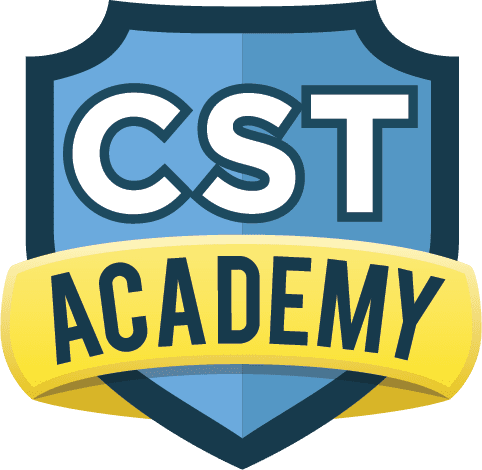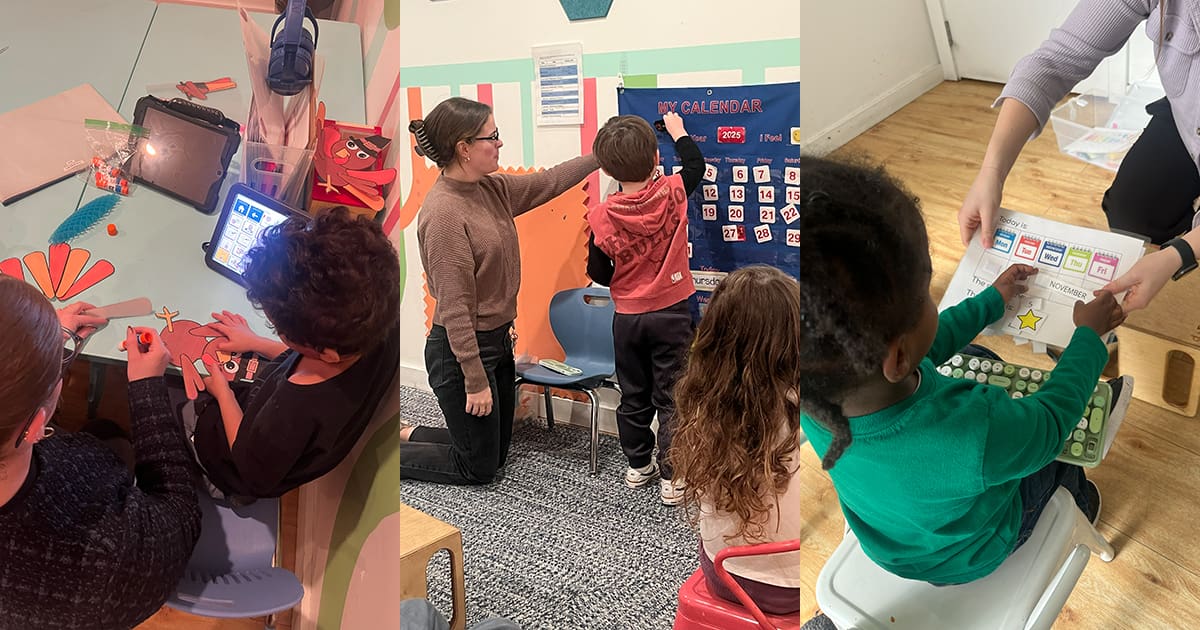Share this Post

In early childhood education, therapeutic preschool programs provide specialized support to help children develop essential skills in communication, socialization, and independence. For many children with developmental delays, learning differences, or physical challenges, assistive technology (AT) plays a crucial role in making learning more accessible and engaging.
At CST Academy, we integrate assistive technology into our therapeutic preschool programs to ensure every child can actively participate, communicate effectively, and build confidence in their abilities. By utilizing customized tools and adaptive techniques, we create a learning environment where all children can thrive.
What is Assistive Technology in a Therapeutic Preschool?
Assistive technology includes any device, tool, or system that helps children overcome challenges related to communication, motor skills, learning, or daily activities. These tools can range from low-tech supports like picture communication boards to high-tech solutions such as speech-generating devices and interactive learning apps.
When assistive technology is integrated into a therapeutic preschool setting, it enhances learning by:
- Improving communication skills for children who are nonverbal or have speech delays
- Enhancing motor development by providing adaptive tools for play and self-care
- Encouraging independence in daily activities like dressing, eating, and transitioning between tasks
- Supporting social interactions by giving children new ways to express themselves
- Providing engaging, multi-sensory learning experiences tailored to different learning styles
By using assistive technology, therapeutic preschools create a more inclusive and supportive environment where all children have the opportunity to succeed.
How Assistive Technology is Integrated into Therapeutic Preschool Programs
At CST Academy, we use a variety of assistive tools and techniques to help children build foundational skills in language, cognition, and motor development. Our licensed therapists, educators, and specialists work together to incorporate assistive technology into everyday activities, ensuring that children receive personalized support in a natural learning environment.
1. Supporting Communication with Augmentative and Alternative Communication (AAC) Devices
For children who experience speech or language delays, assistive technology provides alternative ways to express their thoughts, needs, and emotions. Some of the tools we use include:
- Picture Exchange Communication System (PECS) – A visual communication system that allows children to use picture cards to request items, answer questions, and interact with others.
- Speech-Generating Devices (SGDs) – Tablets and specialized devices that produce speech output when a child selects words, images, or symbols.
- Communication Apps – Interactive applications that help children practice vocabulary, sentence formation, and social interactions in a fun and engaging way.
By using AAC tools, children gain the ability to communicate more effectively, reducing frustration and increasing confidence in their interactions.
2. Enhancing Motor Skills with Adaptive Equipment
Motor skill development is a key focus in therapeutic preschool programs. Assistive technology helps children with fine and gross motor challenges by providing:
- Adaptive writing tools – Special grips, weighted pencils, and slanted writing boards that support children learning to write.
- Switch-activated toys and devices – Electronic toys that respond to simple switches, helping children develop coordination and cause-and-effect understanding.
- Sensory-friendly seating and positioning tools – Adaptive chairs, cushions, and standing desks that support posture and body awareness.
By providing access to these motor-supportive tools, children develop the skills needed for greater independence in play, learning, and self-care tasks.
3. Encouraging Learning and Engagement Through Interactive Technology
Technology-based learning tools are highly effective in capturing children’s attention and reinforcing key concepts. In a therapeutic preschool setting, interactive learning technology includes:
- Touchscreen learning apps – Designed to enhance early literacy, numeracy, and problem-solving skills through engaging visuals and activities.
- Adaptive keyboards and mice – Tools that help children with motor difficulties use computers and tablets more effectively.
- Smartboards and interactive whiteboards – Large touch-responsive screens that allow children to interact with lessons in a hands-on way.
By incorporating interactive technology, children develop foundational academic skills in a way that feels like play, making learning both fun and effective.
4. Supporting Sensory and Emotional Regulation
For children who experience sensory processing challenges, assistive technology can provide calming tools and self-regulation strategies to help them feel comfortable and focused in the classroom. Some commonly used supports include:
- Noise-canceling headphones – Reduce auditory distractions, helping children focus in busy environments.
- Weighted vests and compression clothing – Provide gentle pressure to help with sensory regulation and body awareness.
- Visual timers and schedules – Assist children with transitioning between activities and understanding daily routines.
By integrating sensory-supportive assistive technology, therapeutic preschools help children feel more secure and engaged in their learning environment.
5. Promoting Independence in Daily Living Skills
Assistive technology plays an important role in helping children develop self-care skills such as dressing, feeding, and hygiene. Some of the tools used in a therapeutic preschool setting include:
- Adaptive utensils and cups – Help children develop coordination while eating independently.
- Buttoning boards and dressing frames – Provide hands-on practice with clothing fasteners, zippers, and laces.
- Voice-guided step-by-step learning tools – Help children complete tasks like handwashing and brushing teeth with auditory prompts.
By incorporating assistive tools into daily routines, children gain confidence in their ability to complete self-care tasks with greater independence.
Why Assistive Technology in a Therapeutic Preschool is So Effective
Integrating assistive technology into early childhood education provides countless benefits for children who require additional support. Some of the key advantages include:
- Early intervention leads to long-term success – The earlier children receive assistive support, the more progress they make in language, motor skills, and independence.
- Multi-sensory learning enhances skill development – Interactive tools cater to different learning styles, ensuring every child can engage with lessons.
- Greater inclusion in classroom activities – Assistive technology helps children participate more fully in peer interactions, play, and group learning.
- Increased confidence and self-expression – When children have tools that support their abilities, they feel more capable and empowered.
By utilizing assistive technology, therapeutic preschools create an inclusive, engaging, and supportive environment that allows every child to reach their full potential.
Is a Therapeutic Preschool with Assistive Technology Right for Your Child?
If your child faces challenges with communication, motor skills, self-care, or sensory regulation, a therapeutic preschool program with integrated assistive technology can provide the structured support they need.
At CST Academy, we are committed to helping children succeed through innovative, research-backed strategies. Our team of licensed therapists, educators, and specialists work together to create an environment where every child has the tools they need to learn, grow, and thrive.
If you would like to learn more about how assistive technology in a therapeutic preschool setting can benefit your child, contact CST Academy today. We are here to guide you through the process and help your child build a strong foundation for future success.
Discover Our Pediatric Therapy & Autism Care
ABA Therapy
Support for children with autism.
Autism Evaluation
Expert assessments to identify child needs.
Pediatric Therapy Services
Speech, Occupational, Feeding, and Physical Therapy.
Therapeutic Preschool
A classroom environment designed for early learners with unique needs.

Find the Best Care for Your Child




